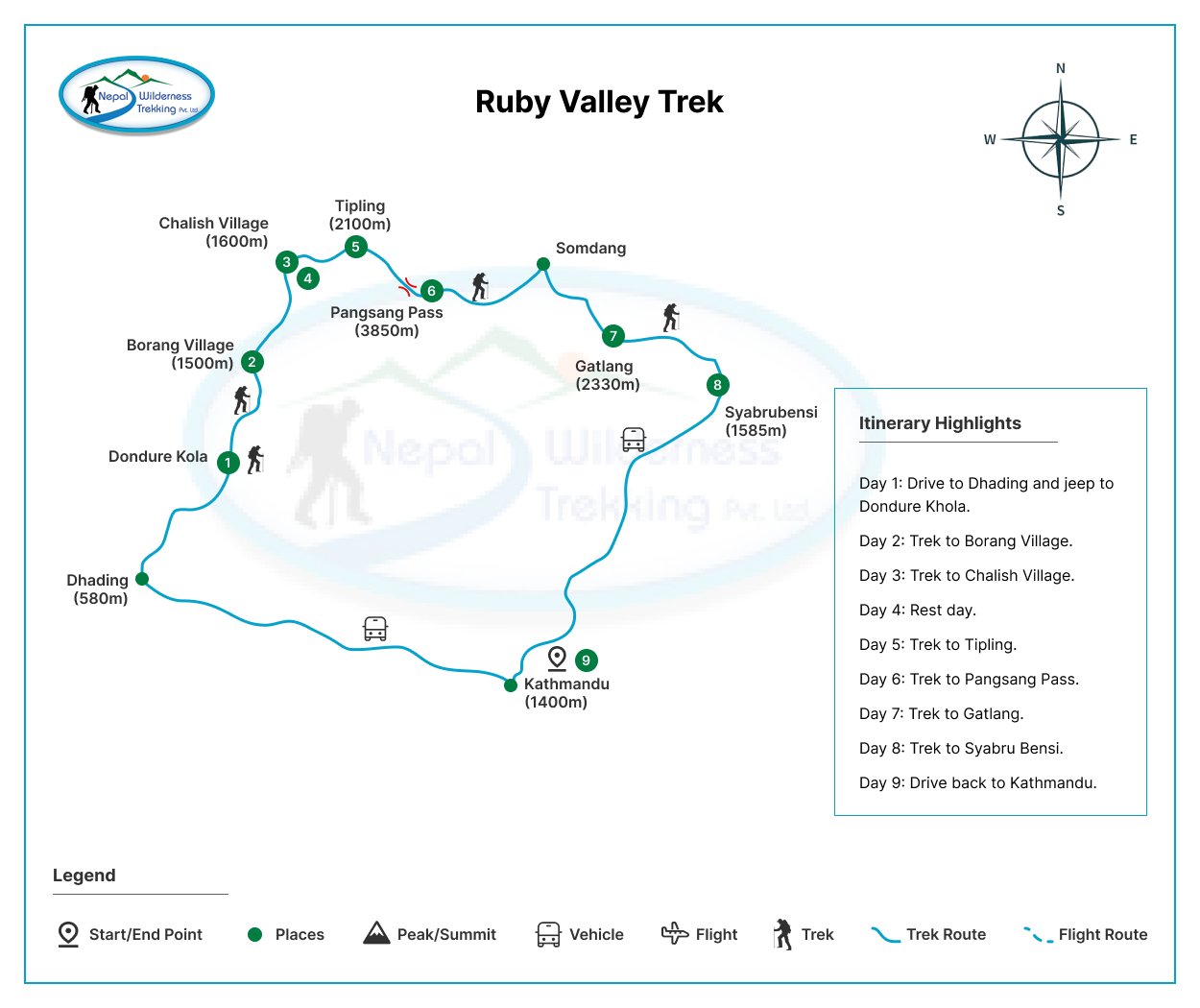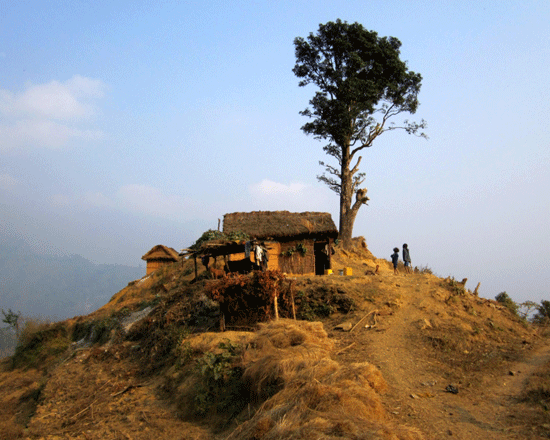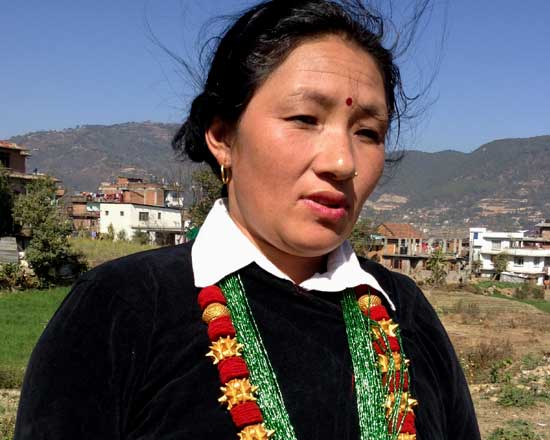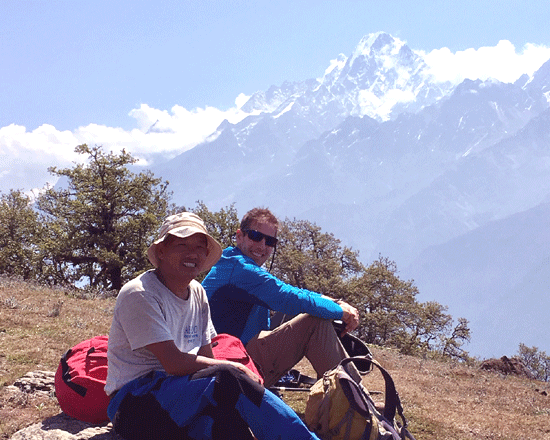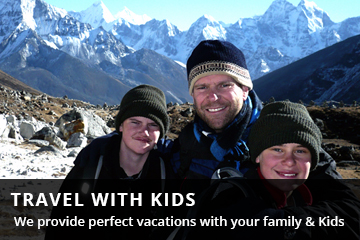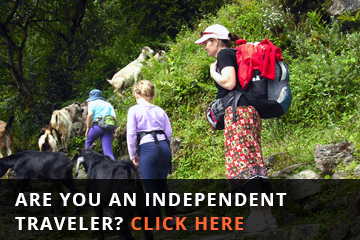Ruby valley trek
Ruby valley trek
Homestay TrekTrip Facts
Since the terrain can be hard and the days long, hikers on these treks should be in good physical condition and have some previous mountain walking experience. Steep climbing may be involved, although it is never necessary to use ropes. Treks at this level can he arranged for periods of 16 to 21 days. Typically, a gradual ascent through a green river valley will lead you up to a number of high passes, where you will reach the altitude of 5416m. Often times, you will get a close insight into the Tibetan culture. Participants should expect to trek above 5416m/17872ft.
Mode of Travel : Land100%
Overview
Ruby Valley trek 9 days package itinerary
The Ruby Valley Trek in Nepal, located in the north-central part of the country, provides trekkers with an off-the-beaten-path experience in a remote and less crowded region. The Ruby Valley trek takes you through the picturesque Ruby Valley, named after the precious stones found in the area. It introduces you to various ethnic communities with distinct traditions and cultures, including the Gurungs, Tamangs, and Newars.
The Ruby Valley trekking itinerary starts a few hours’ drive to Dundure Khola from Dhading and Kathmandu, trekkers embark on a trail that meanders through terraced fields, dense forests, and traditional villages, offering breathtaking views of the surrounding peaks and landscapes. Along the way, you can visit charming villages like Gatlang and Chilime, immersing yourself in the local culture and warm hospitality. Don’t miss the chance to rejuvenate in the healing hot springs of Tatopani.
The duration of the Ruby Valley Trek typically ranges from 9 to 14 days, depending on the chosen route and trekking pace. It is suitable for trekkers with a moderate level of fitness and provides an excellent opportunity to experience Nepal’s beauty and culture in a secluded and serene setting.
The beauty of Ruby Valley Trek
The Ruby Valley Trek unveils awe-inspiring vistas of snow-capped mountains and breathtaking scenery. Nestled between Langtang National Park and Manaslu Conservation Area, this trek takes you through the inner Ruby Valley Rural Municipality of Dhading, known for its ruby deposits in the Ganesh Himal region. There are numerous reasons why the Ruby Valley Trek stands out, and one of them is the chance to stay in local homestays, enabling you to immerse yourself in the local culture and forge connections with the residents.
As you trek through dense forests adorned with rhododendrons, pines, and oaks, panoramic views of Ganesh Himal, Langtang Valley, and Manaslu, among other snow-capped peaks, will treat you. This trek showcases the diversity of geography, biodiversity, and culture, offering a unique experience to explorers. Venture into the Ruby Valley to relish the beauty of nature and embrace the distinctive cultural heritage of the local group along the trekking route.
The Multivalue Hidden Treasure Valley
The Ruby Valley Trek encompasses three enchanting holy lakes known as Kalo Kunda, Seto Kunda, and Ganesh Kunda, located near the base camp of Ganesh Himal. These lakes serve as serene and beautiful landmarks within the trekking territory. These three ponds create the renowned Ankhu Khola River, while the surrounding area contains ruby and zinc mines. Furthermore, a variety of valuable Himalayan herbal plants, including the Jadwar herb, salam Pancha, Nardostachys, Caterpillar Fungus, mountain Swertia, asparagus, and Sanjivani Buti, bless the lap of Ganesh Himal.
Hidden treasure
The Ruby Valley area presents various trekking options, such as Pangsang La Pass, Kalo Kunda, Seto Kunda, Singla Pass Trek, and Paldor Peak. However, trekking in the upper Ruby Valley requires camping gear and proper equipment, as the higher sections of the Ruby Valley trek are more challenging compared to the lower parts. Along the trekking route, there is a natural hot spring located between Chalishgaon and Hindung villages. Many tourists take a rest day in Chalish and enjoy bathing in the hot spring, which offers therapeutic benefits by increasing blood flow, circulation, and metabolism through the presence of essential minerals.
The Ruby Valley Trek offers a captivating and immersive cultural experience, allowing you to learn about the customs and traditions of various ethnic indigenous groups, including Brahmins, Tamangs, Gurungs, and Ghale peoples. Buddhism-Bon Po is practiced by these communities, which includes worshiping nature deities, while some individuals have been influenced by Christianity. Along the trek, you will encounter Hindu temples and Buddhist monasteries, adding to the cultural richness of the journey.
During the homestay in the Ruby Valley trek, you will traverse Pangasng La Pass, situated at an altitude of 3,850 meters above sea level. From this pass, known as Pangsang Danda, you can witness the majestic snow-capped peaks of the Langtang Himal range, Manaslu range, and Ganesh range, as well as breathtaking high alpine pastures and terraced landscapes.
It’s important to note that the Ruby Valley trek is a homestay route, initially explored by TAAN in 2013 but still in the process of development. As a result, luxurious tea houses should not be expected, as accommodation primarily consists of staying with local families and experiencing their hospitality firsthand.
Best Viewpoint during the Ruby Valley Trek
The best viewpoint during the Ruby Valley trek is from Pangsang La Pass, which sits at an elevation of 3,850 meters above sea level. From this vantage point, trekkers can enjoy stunning views of the Ganesh Himal range. The Ganesh Himal range includes peaks such as Ganesh Himal I (7,422 m), Ganesh Himal II (7,118 m), Ganesh III (7,043 m), and Ganesh Himal IV (7,104 m), also known as Babil, Salasungo, and Lapsang Kharbo. This pass offers panoramic views in all directions, making it an excellent spot to appreciate the beauty of the surrounding mountains.
The Ruby Valley trek itinerary typically spans over 9 days and begins from Dundur Khola, following a scenic bus ride from Kathmandu to Dhading Besi, and then a Tata Sumo Jeep ride from Dhading Besi. It is worth noting that the trek can also be done in reverse, starting from Syabrubesi and trekking through Somdang, Tipling, Chalish, and finally descending to Dhading Besi or Tirsuli via Singla pass
Permit for Ruby Valley Trekking
The permit is not required for the Ruby Valley trek, since it is not a Conservation Area or National Park. However, if you plan to cross the Pangsang La pass and join Syabrubensi, you will need Langtang National Park Permits as you will be entering the Langtang area. Additionally, a TIMS (Trekkers’ Information Management System) permit is required for all trekking regions in Nepal.
Best Trekking Season for Ruby Valley Trek
The ideal seasons for the Ruby Valley trek are autumn and spring. Autumn lasts from September to November, while spring lasts from March to May. Both seasons offer their unique charms and advantages.
During the spring season, Ruby Valley showcases a pleasant climate with hills adorned in vibrant colors of rhododendrons, orchids, and other blooming flora. The warm temperatures and clear days make it an ideal time to enjoy breathtaking mountain views.
People consider autumn the most beautiful time in Ganesh Himal Ruby Valley. Mild temperatures prevail even at higher altitudes, and clear skies during the days provide optimal visibility of the majestic mountains. This season attracts visitors from all over the country to experience its splendor.
In winter (December to January), the Himalayas experience a slight chill, with the possibility of snowfall. However, the days remain sunny and pleasant. While rain is rare in the Ruby Valley, winter can be a peaceful time to travel along less crowded trails. It’s important to be prepared for the cold temperatures during this season.
In summary, the autumn and spring seasons offer the best weather conditions and stunning natural beauty for the Ruby Valley trek.
Ruby Valley Trek Food and Accommodations
The food on the Ruby Valley trek homestay, similar to other trekking regions in Nepal, is simple and basic. As you stay in homestays along the route, you have the opportunity to experience local life and cuisine. Staying in a homestay is a meaningful concept as it offers an alternative to luxurious hotels and lodges, allowing you to immerse yourself in the local community’s daily life. While the payment for your stay may not be substantial, even a small amount directly benefits the mountain community or individual who leads a challenging life in the region.
Accommodations in homestays can provide private or shared rooms, including dormitory-style rooms with multiple beds. Although the rooms may be small, they are typically clean, tidy, and offer beautiful views.
When it comes to Ruby Valley treks’ meals, you will likely eat where you stay, as is expected by the locals. Home-stay owners and locals primarily make money by selling food rather than lodging. The menu options may not be as extensive as those in regular tea houses. Common food choices on this trek include eggs prepared in various ways, chapati bread, potatoes cooked in different styles, instant noodles, Dal Bhat Tarkari (rice, lentil soup, and vegetable curry), and local dishes prepared according to their traditions. Additionally, Dal Bhat, a typical and traditional Nepalese meal, is readily available in this region at a reasonable price. For beverages, you can choose from options like Nepali tea and black coffee.
Detail Itinerary
Day 01: Drive from Kathmandu to Dhading Bensi and Jeep to Dondure Khola Your adventure begins with an early morning drive from Kathmandu to Dhading Bensi, the district headquarters of Dhading. The scenic 4-hour journey winds through the lush landscapes of the Trishuli River valley, passing through terraced fields, small towns, and forested hills. Upon arrival at Dhading Bensi, you will transfer to a local jeep for a rugged off-road ride to Dondure Khola, a small riverside settlement.
Upon reaching Dondure Khola, you will settle into a welcoming village homestay where you will experience the warmth of local hospitality. This area is home to various ethnic groups, including the Tamang and Gurung communities, known for their rich cultural heritage and traditional lifestyles. In the evening, enjoy a home-cooked meal made with locally sourced ingredients and learn about the village's customs and way of life.
Day 02: Trek to Borang Village (1,500m) Your trek begins with a gradual ascent through terraced fields and dense forests. As you climb higher, you will be treated to panoramic views of the surrounding hills and glimpses of the Ganesh Himal range. The trail winds past small settlements where you can observe traditional farming practices and encounter friendly villagers going about their daily routines.
After approximately five hours of trekking, you will arrive at Borang Village, a picturesque settlement perched on a hillside. The village is predominantly inhabited by the Tamang people, whose Buddhist faith is reflected in the prayer flags fluttering in the breeze and the intricately carved mani walls. Spend the evening in a local homestay, where you will have the opportunity to experience Tamang culture through storytelling, music, and dance.
Day 03: Trek to Chalish Village (1,600m) Leaving Borang, the trail meanders through rhododendron and pine forests, providing a habitat for diverse wildlife, including langurs, Himalayan monals, and various species of pheasants. The 3-4 hour trek to Chalish Village is relatively gentle, allowing you to immerse yourself in the serene natural surroundings.
Chalish is a vibrant village known for its mixed ethnic population, including Gurung, Tamang, and Dalit communities. This cultural diversity is reflected in the architecture, festivals, and daily life of the villagers. Upon arrival, you will be welcomed into a homestay where you can participate in local traditions and sample regional delicacies.
Day 04: Rest Day and Explore the Hot Springs Today is a well-deserved rest day to relax and explore the natural hot springs near Chalish Village. These thermal springs are believed to have healing properties and are a popular spot for locals and trekkers alike to soothe tired muscles.
During the day, take time to explore the village and interact with the local people. Learn about their agricultural practices, visit ancient monasteries, and observe the harmonious coexistence of different cultural groups. The surrounding forests are home to medicinal plants and a variety of bird species, making this a perfect day for nature enthusiasts.
Day 05: Trek to Tipling (2,100m) After breakfast, you will continue your journey to Tipling, a beautiful village situated at 2,100 meters. The 3-4 hour trek takes you through alpine meadows and past chortens (Buddhist shrines), offering stunning views of the Ganesh Himal range.
Tipling is known for its rich cultural tapestry, with a significant Tamang and Ghale population. The village boasts several monasteries, and if your visit coincides with a festival, you may witness colorful rituals and dances. Spend the night in a homestay, where you can engage with the villagers and gain insights into their spiritual beliefs and lifestyle.
Day 06: Trek to Pangsang Pass (3,850m) and Overnight in Somdang (3,320m) Today is one of the most challenging yet rewarding days of the trek. You will ascend to the Pangsang Pass, located at 3,850 meters, which serves as a natural viewpoint offering breathtaking vistas of the Langtang range, Ganesh Himal, Paldor Peak, Manaslu, and even the distant Annapurna range.
The trek takes 7-8 hours, traversing alpine landscapes adorned with wildflowers in the spring and golden meadows in the autumn. As you cross the pass, keep an eye out for Himalayan wildlife, including musk deer and Himalayan tahr. Descend to the village of Somdang, where you will spend the night in a lodge. Somdang is known for its copper mines and the remnants of ancient trade routes that connected Nepal and Tibet.
Day 07: Trek to Gatlang (2,238m) Your journey continues with a 5-6 hour trek to Gatlang, a traditional Tamang village nestled on a hillside. The trail descends through dense pine and rhododendron forests, offering opportunities to spot exotic birds and small mammals.
Gatlang is part of the Tamang Heritage Trail and is renowned for its cultural richness and architectural beauty. The village features stone houses, ancient monasteries, and a large chorten at its entrance. Upon arrival, you will be welcomed by the villagers and invited to participate in local customs, including traditional weaving and handicrafts. Overnight in a lodge, where you can savor authentic Tamang cuisine.
Day 08: Trek to Syabrubesi (1,503m) The final leg of your trek takes you to Syabrubesi, a bustling town and gateway to the Langtang region. The 5-6 hour descent passes through terraced fields, bamboo groves, and small hamlets. Along the way, enjoy panoramic views of the Langtang Himal and the lush valley below.
Syabrubesi is a melting pot of cultures, with a mix of Tamang, Tibetan, and other ethnic groups. Take the evening to explore the town, visit the local market, or relax in a cozy lodge. This is your last night in the mountains before returning to Kathmandu.
Day 09: Drive Back to Kathmandu After breakfast, embark on a scenic 9-hour drive back to Kathmandu via Dhunche and Trisuli. The journey retraces your path through verdant valleys, terraced hillsides, and bustling towns.
Upon arrival in Kathmandu, you will be transferred to your accommodation, where you can rest and reflect on the incredible experiences and cultural encounters of your Ganesh Himal trek.
Cost Included
- Hotel to the bus park by car.
- Kathmandu to Dhading Bensi(4 hours) by public bus.
- Lodge accommodation on homestay during your trekking.
- Italian, Chinese, Nepali, Indian, and many other European Delicious Meals three times a day (Breakfast, lunch, and dinner chosen by Menu).
- National park entrance permits and TIMS card.
- One fluent English speaking, government registered, experienced, first aid trained guide who is friendly and familiar with this area and required porters, one porter for two clients.
- Required Equipment sleeping bag jackets (Self-preparation equipment list
- Guides/porters- food, lodge, bus transportation, salary, insurance, equipment, etc.
Cost Excluded
- Hotel in Kathmandu
- Personal equipment
- all beverages, Soft and hard table drinks such as coke, beer,
- drinking water/mineral water, etc. during the trek.
- dessert, etc
- Hot shower, laundry
- personal insurance
- Tip for guide and porter.
- Excluded are all costs and expenses not listed under "Cost Includes."
- any costs or delays beyond the control of the management, such as those due to landslides, weather conditions, itinerary modifications for safety reasons, illness, changes in government policies, strikes, and similar factors, are not included.
| Trip Dates | Trip Price | Confirmed Pax | Trip Status | |
|---|---|---|---|---|
| Fixed Departures will be added soon! | ||||
Trip Map
